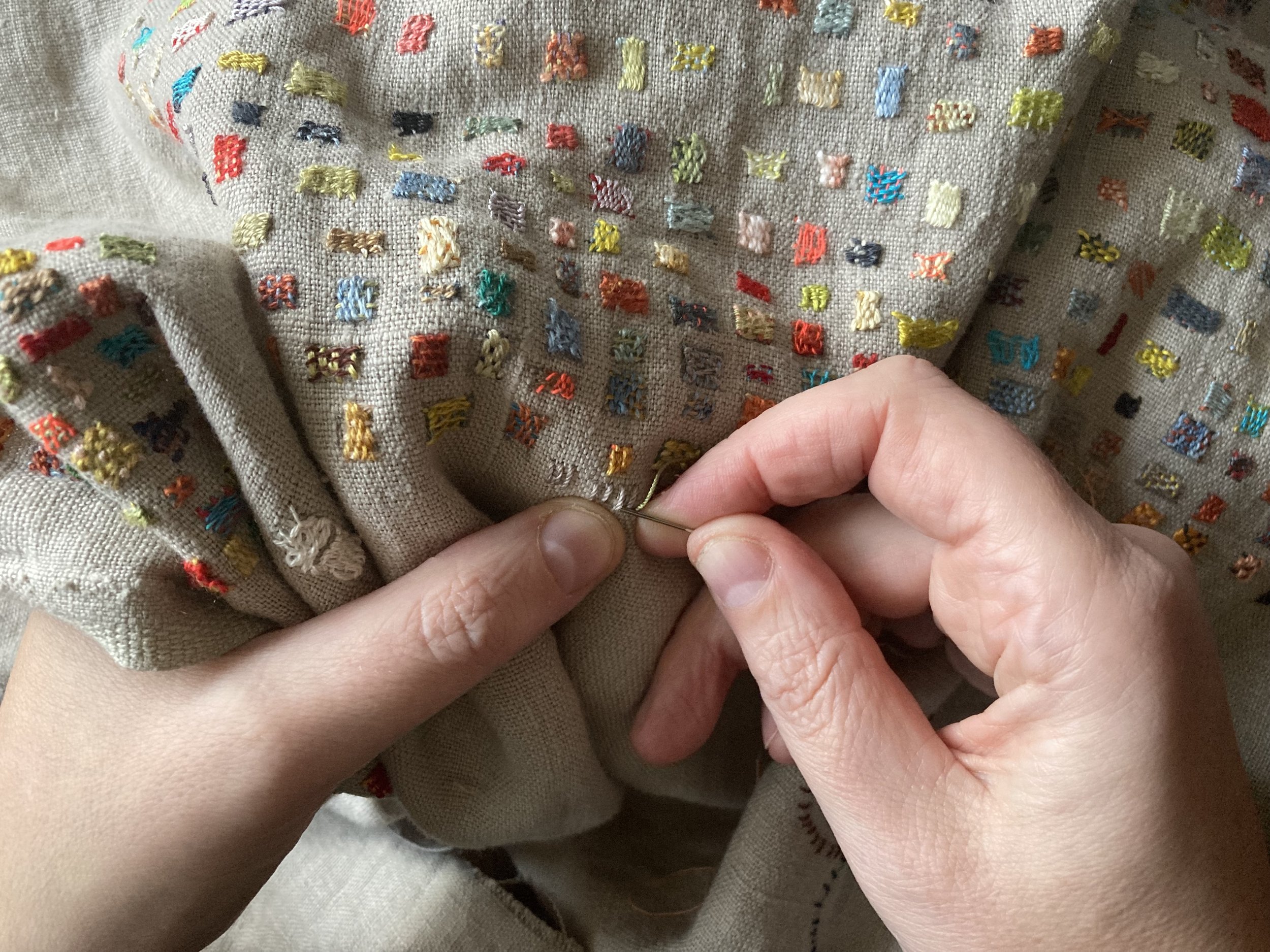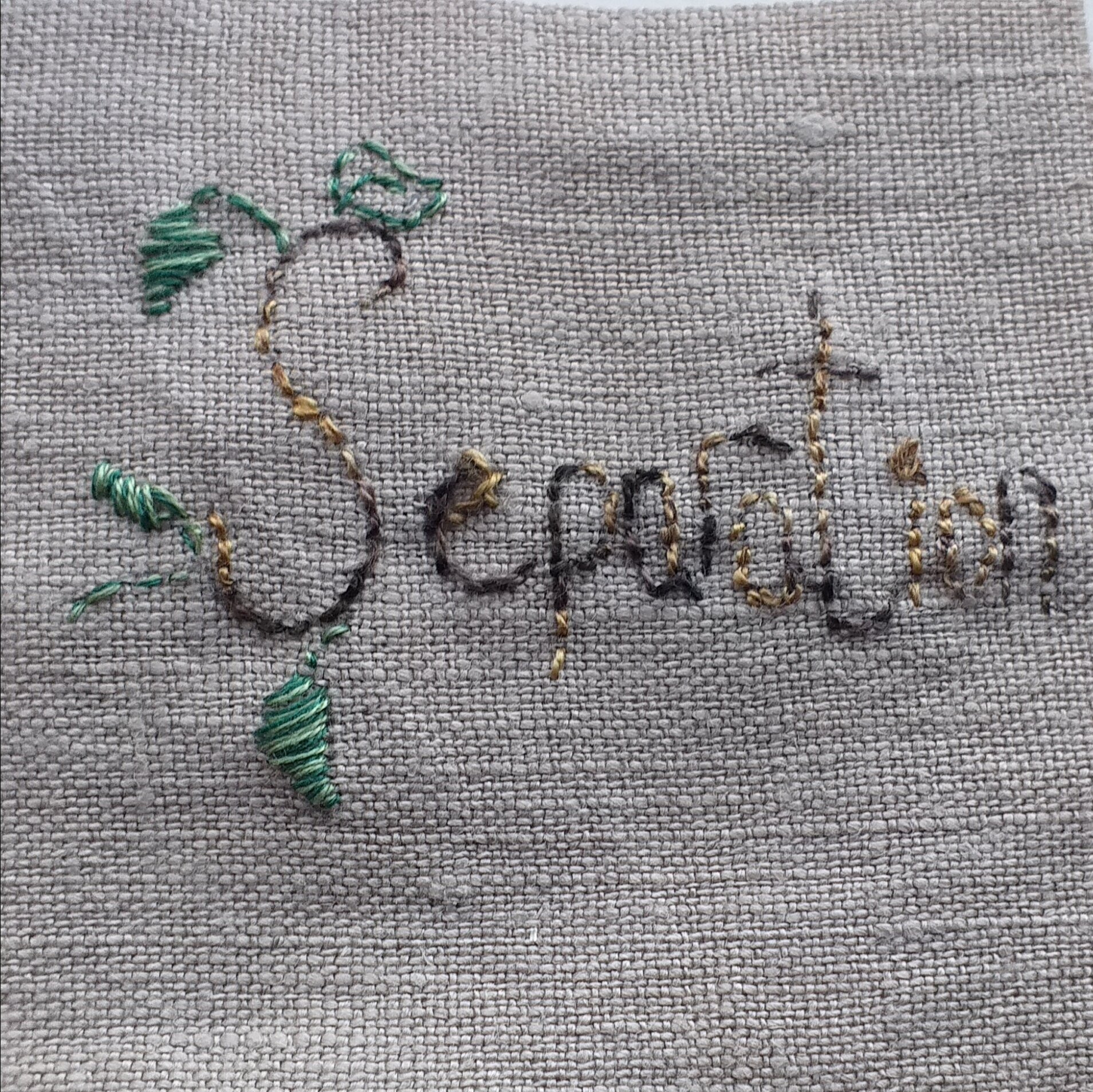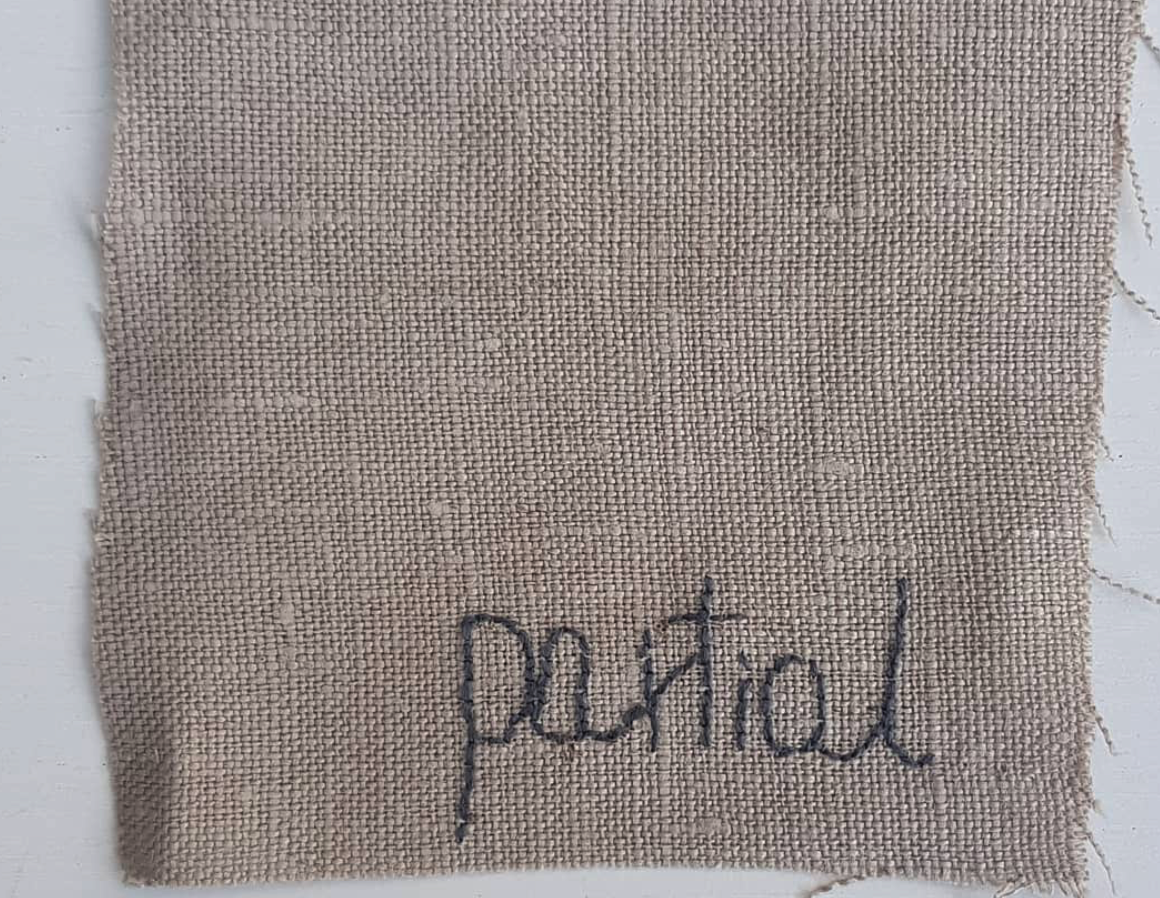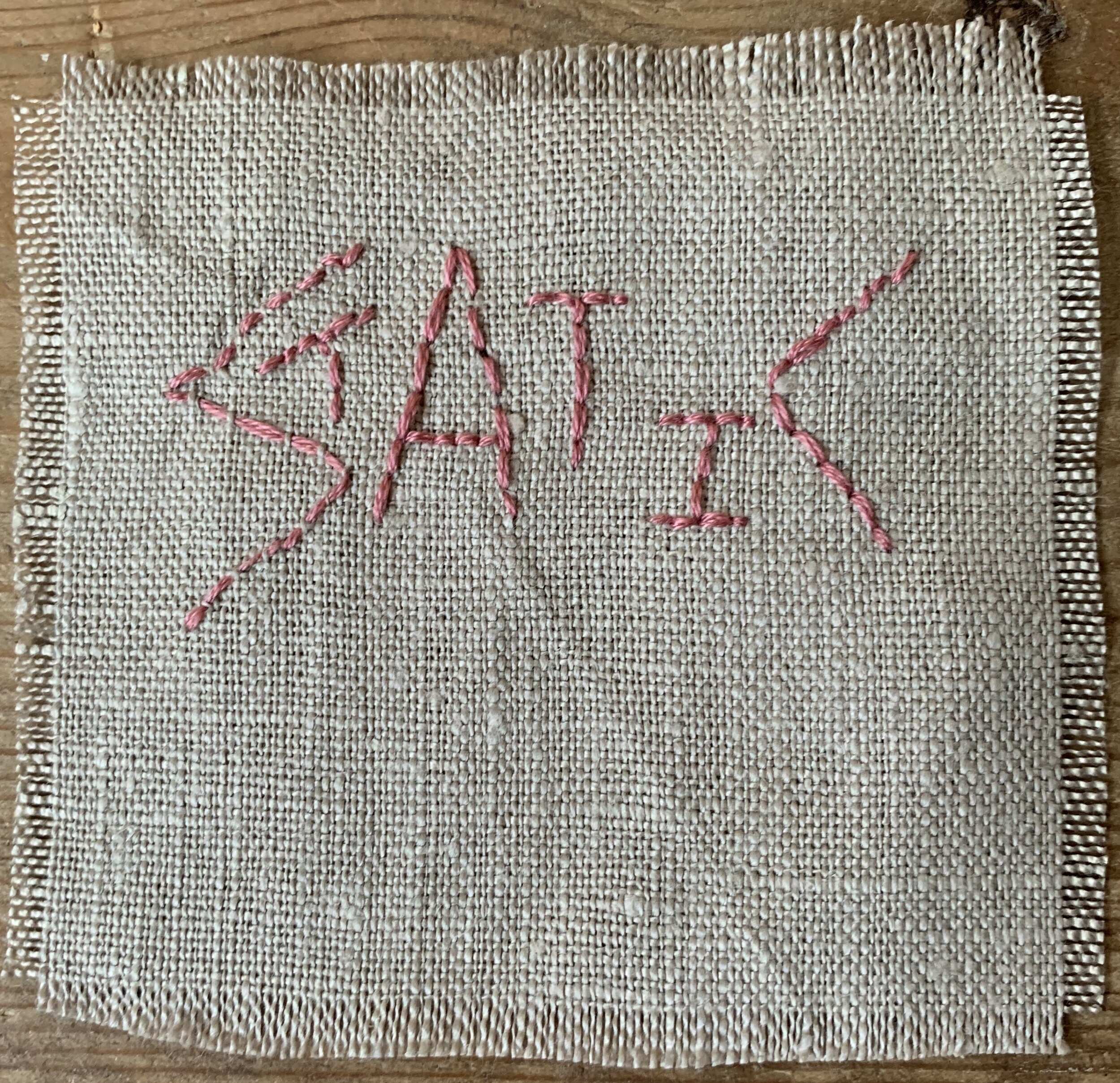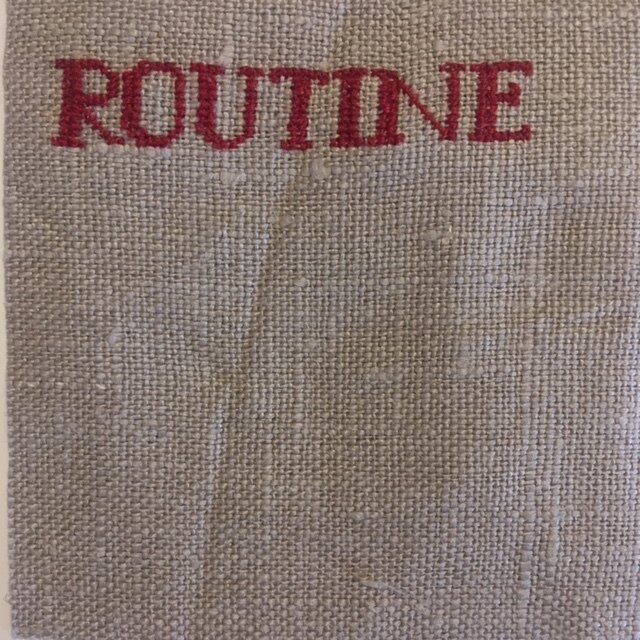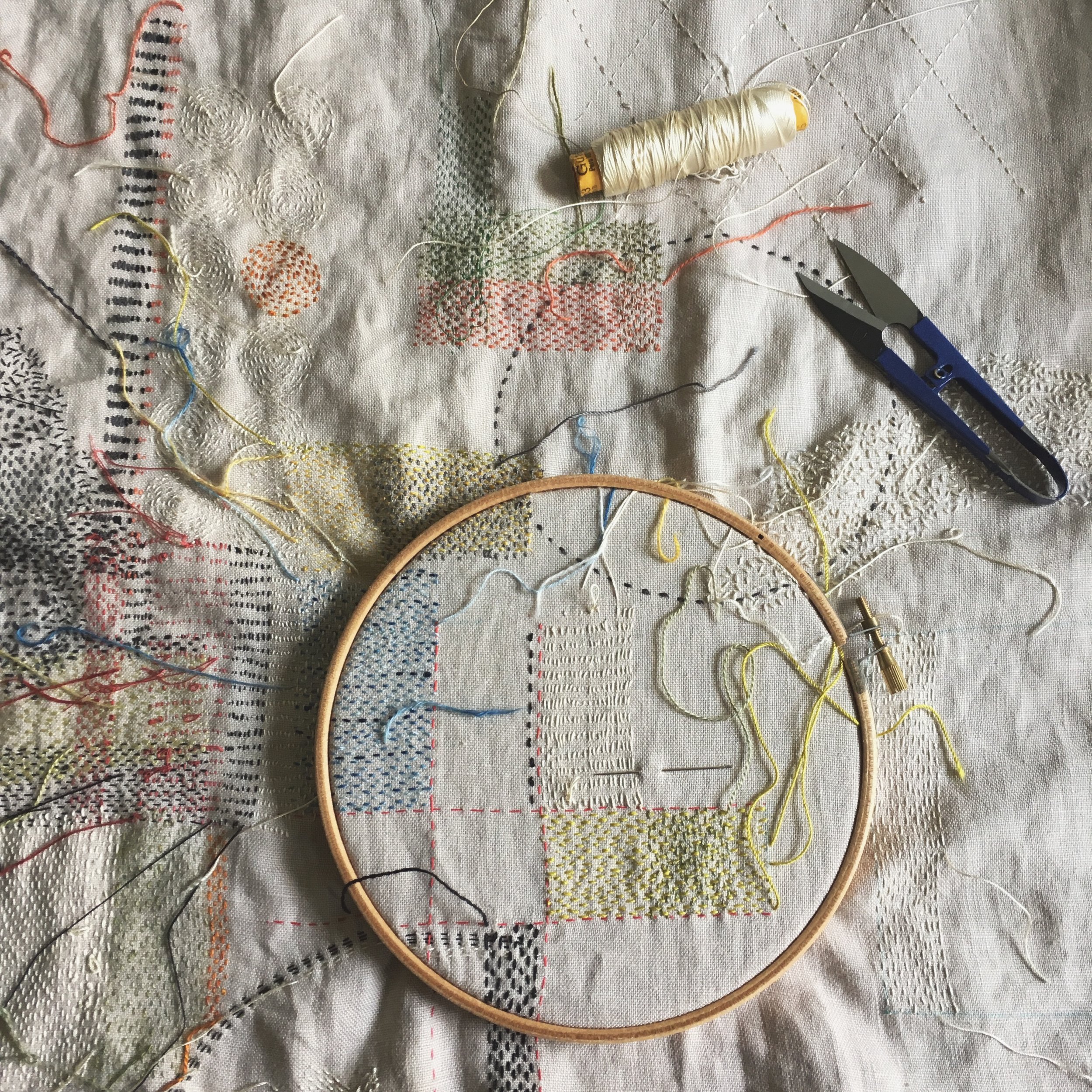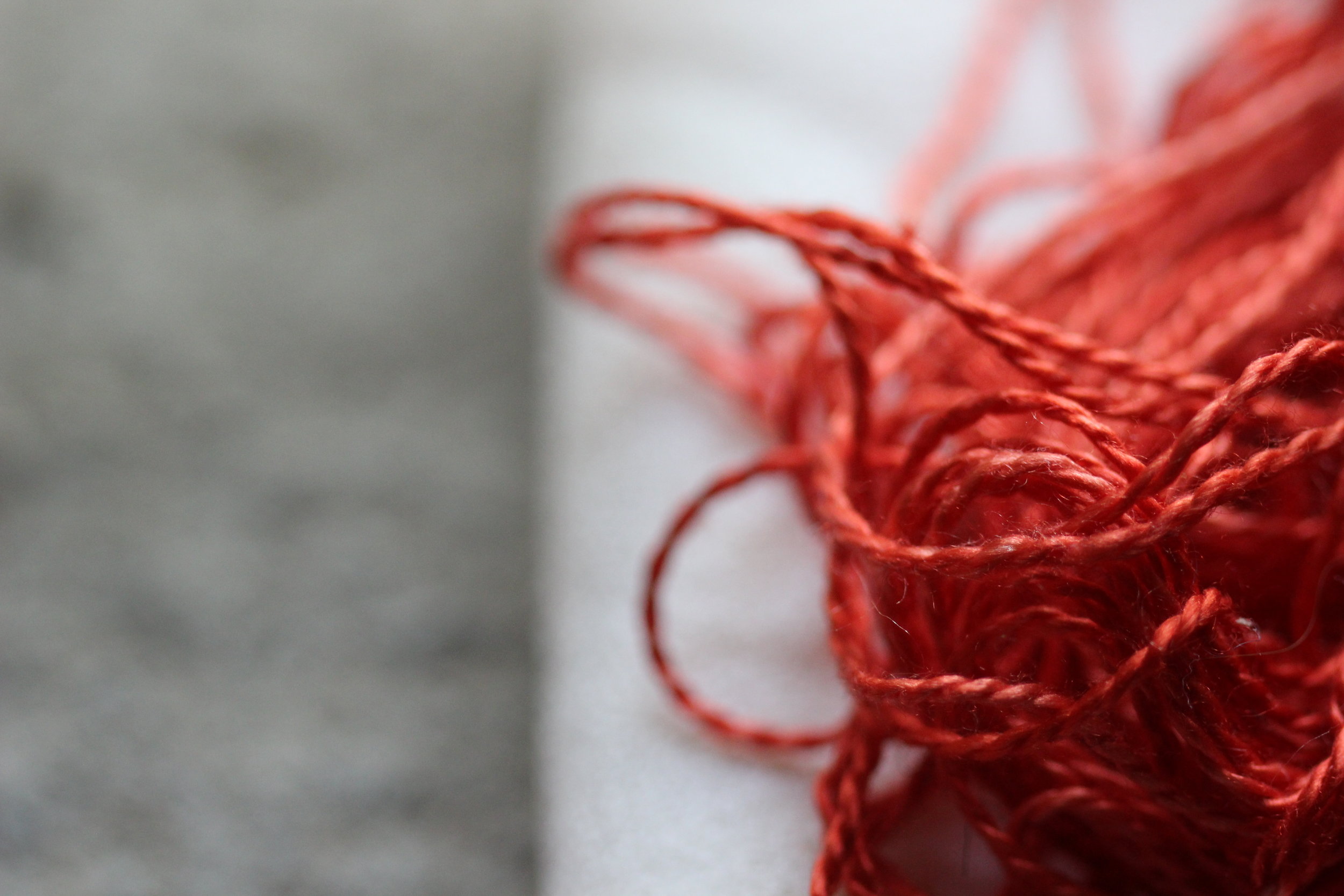Nine years of (almost) everyday stitching. A tangle of thread on the back, some of the surface threads now beginning to fade, the 10 metres of recycled linen cloth that make up my Stitch Journal. My choices of thread connect my thinking through community and studio practice and daily life.
I’ve been thinking about stitching and writing again as I come to the end of five years of PhD research with the Open University. I’ve been looking in granular detail at socially engaged arts practices and how they work when exploring specific aspects of textile heritage. This is an ethnographic study of the growing, making, unmaking and remaking of projects, situated in ordinary places.
The small needle-woven squares now littering the surface of my cloth echo the painstaking process of editing my work. Short ends of threads, clipped from other stitching and saved over time are woven back in. Adrienne Rich describes, ‘Looking back and seeing with fresh eyes, of entering an old text from a new critical direction’ (1972, p.18). My margin notes to myself suggest that I ‘unpick’ a paragraph; neon thread highlights a sentence or a single word.
I want my words to be as precise as my needle.
Rich, A. (1972) When We Dead Awaken: Writing as Re-Vision College English Vol. 34, No. 1, Women, Writing and Teaching (Oct., 1972), pp. 18-30
